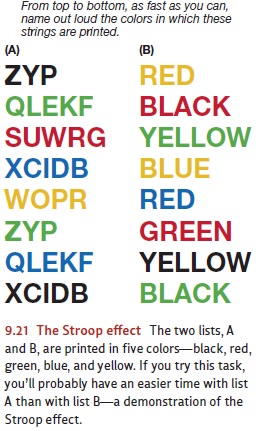Chapter: Psychology: Thinking
Problem Solving: Automaticity
Automaticity
Relying on subroutines also has
another advantage: The modular units are generally well practiced, and this
allows the problem solver to focus attention on the larger-scale plan rather
than worry about the details of carrying out the plan. In fact, this is one
reason why problems that seem impossible for the novice are absurdly easy for
the expert: Even when the expert is facing a novel problem, she’s likely to
rely on several familiar subroutines that are already available as “chunks” in
memory. Thus, the expert taxi driver gives little thought to maneuvering
through traffic and so can focus his thoughts on the more general task of
navigation. The novice driver must focus on the maneuvering—and while
preoccupied with this task, he may miss his exit.
It’s plainly helpful, then, that
subroutines can be executed without much thought; this frees up your attention
for other aspects of the task. Still, in some circumstances this automaticity (the ability to do a task
without paying attention to it) can create problemsof its own, because
automatic actions, once set in motion, are often difficult to turn off or
modify.
A striking example is known as
the Stroop effect, named after its
discoverer (Stroop, 1935). This effect hinges on the fact that many of the
steps involved in ordinary read-ing have become quite automatic—which is a good
thing, because it means that when you’re reading a text, you can focus on the
ideas being expressed rather than the mechanics of reading itself. Even so,
this automaticity can cause troubles of its own.

To demonstrate the Stroop effect,
people are asked to name the colors in which groups of letters are printed
(Figure 9.21). If the letters are random sequences (fwis,sgbr) or irrelevant words (chair,
tape), this task is rather easy. But if the letters formcolor names (yellow, red), the task becomes much
harder. Thus, a participant might see red
printed in green ink, blue in brown
ink, and so on. Her task is simply to name the ink color, so she should say
“green, brown” in this example. But in this setting, the participant cannot
help but read the words, and this produces a strong compet-ing response: She’s
likely to respond very slowly, because while trying to name the ink colors, she
is fighting the tendency to read the words themselves aloud. (For more on
automaticity, see Bargh & Ferguson, 2000; Pashler, Johnston, &
Ruthruff, 2000; Stolz & Besner, 1999.)
Related Topics